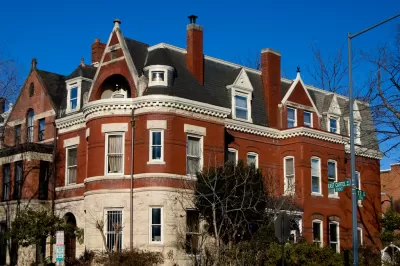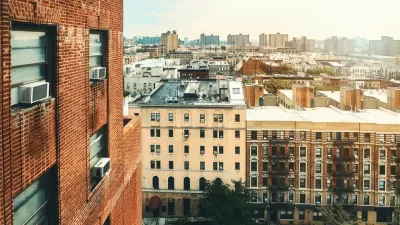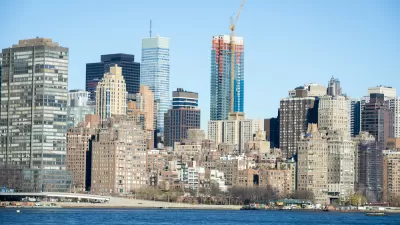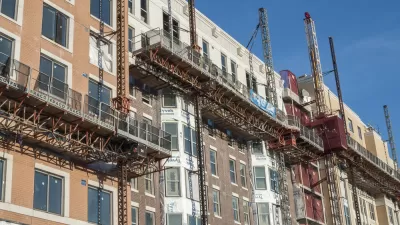In Washington D.C., ZIP code 20003 is split into two distinct areas: fiercely preserved Capitol Hill and the construction-heavy Capitol Riverfront. But where are rents skyrocketing, and what factors go into that equation?

"Not long ago," Payton Chung writes, "shiny new high-rise apartments around Navy Yard rented for more than the old rowhouses on the Hill. Now that many shiny high-rises have been built, they've become the cheaper option despite their 'luxury amenities.'"
As thousands of new residents take up occupancy in the "instant neighborhood" adjacent to the Anacostia, construction continues apace. In a phenomenon we've seen recently in cities like Seattle and Portland, abundant supply may really be keeping rents down for the time being.
The story is different in Capitol Hill, where the neighborhood's physical character is zealously guarded. "By contrast, people who want to move to the Hill, or even just move to a different apartment on the Hill, must compete for just a few empty apartments. As a result, prices are bid up."
But the widespread construction of tony "showplaces" in the historic shells of Capitol Hill houses attests to a different sort of change. "Even as the 'neighborhood character' of historic rowhouses has stood still, the neighborhood's population and social character have been transformed as ever-higher housing prices exclude all but the wealthy."
While the case of ZIP code 20003 may give hope to supply-side housing advocates, Chung also discusses why adding plentiful new units may stabilize prices, but won't necessarily lower them. Without the addition of housing supply throughout the city, this neighborhood-level effect may be very temporary.
FULL STORY: A tale of two 20003s: high rises or high rents

Planetizen Federal Action Tracker
A weekly monitor of how Trump’s orders and actions are impacting planners and planning in America.

Congressman Proposes Bill to Rename DC Metro “Trump Train”
The Make Autorail Great Again Act would withhold federal funding to the system until the Washington Metropolitan Area Transit Authority (WMATA), rebrands as the Washington Metropolitan Authority for Greater Access (WMAGA).

The Simple Legislative Tool Transforming Vacant Downtowns
In California, Michigan and Georgia, an easy win is bringing dollars — and delight — back to city centers.

The States Losing Rural Delivery Rooms at an Alarming Pace
In some states, as few as 9% of rural hospitals still deliver babies. As a result, rising pre-term births, no adequate pre-term care and harrowing close calls are a growing reality.

The Small South Asian Republic Going all in on EVs
Thanks to one simple policy change less than five years ago, 65% of new cars in this Himalayan country are now electric.

DC Backpedals on Bike Lane Protection, Swaps Barriers for Paint
Citing aesthetic concerns, the city is removing the concrete barriers and flexposts that once separated Arizona Avenue cyclists from motor vehicles.
Urban Design for Planners 1: Software Tools
This six-course series explores essential urban design concepts using open source software and equips planners with the tools they need to participate fully in the urban design process.
Planning for Universal Design
Learn the tools for implementing Universal Design in planning regulations.
Smith Gee Studio
City of Charlotte
City of Camden Redevelopment Agency
City of Astoria
Transportation Research & Education Center (TREC) at Portland State University
US High Speed Rail Association
City of Camden Redevelopment Agency
Municipality of Princeton (NJ)





























